Stephenville – Home of the Tarleton Texans
July 4th, my family and I wanted to visit someplace new, yet not stray too far so that we could make it back in time for some fireworks. As I was brainstorming places we could visit, a small town named Stephenville popped up in my mind as a good destination for this trip. Only about 110 miles away from Dallas, there was one noteworthy place right off the bat I knew we could see there – Tarleton State University. Add in that Stephenville was located in a county I have never explored before, and the deal was sealed. We decided to make it happen!
The county seat of Erath County, Stephenville is home to just under 21,000 people. It is more populated than many of its neighboring cities, such as Comanche and Mineral Wells. The city was founded in 1856, and named after settler John Stephen, who donated land for the original townsite. Although initially Stephenville was a successful settlement, Comanche tribe raids, along with the perils of the Civil War caused a decrease in population soon after. Fortunately, the town sprung back to life starting in the late 1800s as an agriculture and livestock hub, and has been thriving since.
Coming from Dallas, we took Interstate 20 to just west of Mineral Wells. There, we connected to U.S. Route 281, which took us straight into town. This portion of 281 consisted of mainly three-lane roads, and traffic flowed at a consistent 60ish miles an hour. It also had plenty of other cars, so if you are one of those folks that prefer to travel on roads that aren’t desolate(like my mom), there is nothing to worry about here. Total travel time? About two hours.
Upon arriving, the first stop was the Erath County Courthouse, located in the center of the town square. Many of the courthouses in Texas have some pretty impressive architecture, and this one was no exception!
The second courthouse to be used by the county, it was built in 1892 and laid out by James Riely Gordon, who is well known for designing other courthouses in the state. On the outside lawn, there were various memorials and landmarks. I found this one to be pretty cool – a cow named “Moo-La”, perched up on a sign, noting Erath County’s involvement in the dairy industry.

There was also a memorial honoring the veterans of the county.

We then walked around the average-sized town square. Stephenville has a pretty traditional downtown layout, with buildings surrounding all four sides of the courthouse. One distinct feature is the remarkable architecture of some of the buildings! There is some notable small-town charm here.


On the edge of downtown was the City Hall. This building just looked bland in comparison with the ones in the town square.

From there, we headed for the place most people equate with Stephenville: Tarleton State University.

Founded in 1899, Tarleton is one of eleven schools in the Texas A&M University System. With a student population of over 12,000, it offers degrees in Agriculture, Business, Engineering, and more. An NCAA Division II school, the Tarleton Texans compete in all 12 varsity sports. Up until my visit to Stephen F. Austin State University in Nacogdoches, I would always get it confused with Tarleton. Both schools use a purple color scheme, and are associated with at least part of the word “Stephen”.
We drove around campus first to get an idea of where we wanted to explore on foot. Many of the buildings we saw, especially the dorms, were newer than I thought. That came as a surprise, since when I Googled the school in the past, the photos I came across showed the buildings to be pretty dated.

Judging by the color and design of the buildings, there was a striking resemblance to A&M Commerce, my father’s alma mater.


Finally deciding to stop procrastinating our entry into the sweltering heat, we parked our car in one of the side lots and began walking around campus. The first place we came upon was the Trogdon House, home of the university president. From the historical plaque, I was a bit unsure if the head of the school still resided there, but a quick glance in the windows confirmed that someone was indeed living there.

We then swung by the library. This was one of several buildings that definitely wasn’t new. It was closed for the Independence Day holiday, but looked pretty typical inside, with a coffee shop and a lobby area to study or meet up with your group members.

Right next to the library was something that I hadn’t seen before – a public bike repair station! Equipped with an air pump and various tools, I could see this coming in handy and possibly saving the day when something starts going wrong.

More than just seeing the exterior of the buildings, I wanted to go inside one and take a look at the environment a Texan would be in on a day-to-day basis. Being that it was a holiday, I didn’t expect any of the buildings to be open, but nevertheless, the O. A. Grant building was, so we walked right on in.

On the inside, the hallways and decorations were pretty plain and no-nonsense style. There might have been a poster or two, but for the most part, there wasn’t too much to look at.

We checked out a few of the classrooms and lecture halls. Both seemed well-equipped and were pretty clean.


Much like the rest of the building, there wasn’t anything too spectacular about them design-wise. That being said, some of the lecture halls featured a mural on the wall, which I thought was a pretty cool implementation of public art.

Leaving the Grant building, we came across a statue of John Tarleton, the school’s founder, located in a fountain just off to the side. He has his pet duck, Oscar P, right next to him. Interestingly enough, no historical evidence pinpoints Mr. Tarleton ever owning a pet, and thus the actual existence of Oscar is solely a myth. Regardless, traditions such as students calling “Hey, Oscar P!” as a symbol of school spirit have arisen, and can be heard at athletic events and seen on those purple Tarleton t-shirts.

Then there was the Tarleton military memorial. Dedicated to the veterans of the school, it had a unique feature – a permanent granite lectern. It was complete with a glass stand on the back as a place to put speaker notes. Definitely something I haven’t seen elsewhere.

With that, we jumped back in the car and briefly visited one last stop – the Stephenville Clark Regional Airport. A general aviation field with one runway, it is pretty well-known amongst pilots due to its close proximity to Hard Eight BBQ, a supposedly awesome place for some Texas grub. When we drove thru the restaurant parking lot, it was pretty packed, and the lines were fairly long. If you are a meat eater, be sure to check this place out when in town – it’s got to be popular for a reason! (As a vegetarian, I am only limited to the sides.) We skipped eating here since I had already tried this place out in 2014, and didn’t find those mashed potatoes and yams impressive enough to warrant the wait.
Departing the airport, we headed back to Dallas. The traffic was fairly light, and we made good time coming back into the metroplex. For some reason, the journey home on all of these trips always feels quicker than the journey coming out. Although there just isn’t much to see or do in Stephenville, it is a great place for experiencing a bit of cool architecture in the town square, or trying to debunk the myth of Oscar the duck at Tarleton!



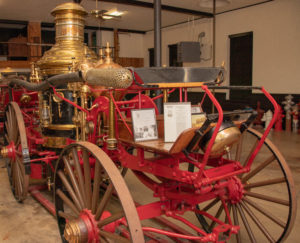
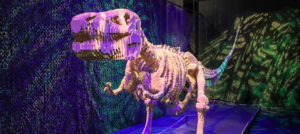
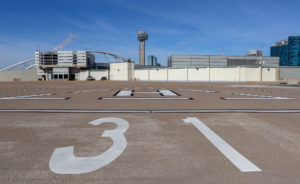
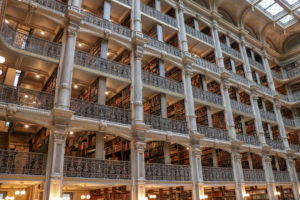
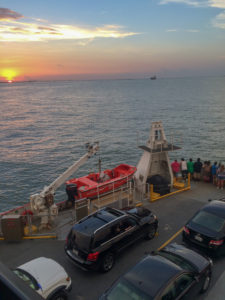
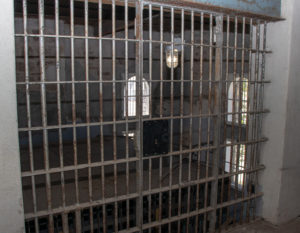
John Tarleton did in fact have a pet duck they both walked to stephenville from Tennessee